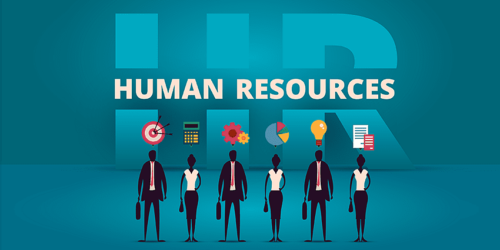Human Resources Articles Analysis

Article 1: Employee Engagement Isn’t Just a Buzzword – It’s a Competitive Advantage
Summary of the Article
In this article from The Globe and Mail, Craig Richardson, the CEO of the Canadian General-Tower provides answers to the following 2 questions:
- Why is employee engagement competitive advantage?, and
- How can organisations increase employee engagement?
Richardson says that engaged employees are more likely to fulfil the job requirements. When they feel simply happy and motivated within the workplace, and they find their work meaningful to perform, they work harder, they put more effort and eventually they conclude better work. He states that employees make more confident decisions and give better service to clients and customers when they feel empowered by a workplace which not only values all employees but also supports each one of them with continuous dialogue and feedback. Being 22% more productive than others on average, as indicated in the article, engaged employees are a definite competitive advantage for a company.
With respect to what companies can do to increase employee engagement, Richardson points out that building an organisational culture that supports employee engagement and talent retention is the key. There should be a strong foundation within the company promoting dialogue, encouraging and acknowledging exceptional ideas and performances. Career development tools offered to employees would help improving employee engagement too, as those will nurture their success in their professional lives and also maximize their contributions to the company. Lastly, Richardson refers to the onboarding process and states that onboarding needs to include performance agreement between employee and employer, and it should be visited frequently to keep the employee on track (Richardson, 2019).
Referral to the Textbook
Topic: Employee Engagement. Chapter: Chapter 7 – Orientation, Training and Development, and Career Planning. Page: 295.
As we see in the Chapter 7, employee engagement is a part of active career planning and it benefits a company in many ways. Firstly, employee engagement lowers employee turnover by paying attention to employee’s performance and development. As said in the article, ideas, skills and knowledges from employees are the company’s greatest assets which ultimately bring long-term value to the business. Secondly, employee engagement increases organizational loyalty by applying the recognition systems and taking into account employee’s ideas and outstanding efforts. Appraisal system rewards employees for their contributions to the company, tightens the bond between workers and organization, and encourages the exchange of new valuable ideas. Lastly, employee engagement is a tool for managers to empower their employees. With dedicating feedbacks and recognition, employees are encouraged to reach to their fullest potential that will benefit the organization in the long term (Schwind, Uggerslev, Wagar, Fassina, & Bulmash, 2013).
Human Resources Terms
Onboarding: The process of integrating and acculturating new employees into the organization and providing them with the tools, resources, and knowledge to become successful and productive.
Retention: Company’s ability to keep employees.
Performance Management: The use of performance data to effect organizational culture, systems, and processes, set goals, allocate resources, affect policies and programs, and share results.
Performance Appraisal: The process by which organizations evaluate employee job performance.
Article 2: Multiple Tim Hortons Franchises, Other Businesses Cut Pay, Benefits, Citing Minimum Wage Hike
Summary of the Article
In this article from the CBC News, Aaron Saltzman discusses about a raise in minimum wage by the Government of Ontario. One of the results is that many employers decided to cut certain benefits such as paid breaks and perks. This act is a reaction to offset the sudden increase in labour cost when minimum wage rises from $11.60 to $14 per hour, effective from January 01, 2018.
The article specifically touches upon the case of some Tim Hortons franchises in different locations around Ontario. The coffee giant claimed that due to the increase in the minimum wage, they were forced to take the necessary countermeasures to mitigate the impact on the business. Reasons such as “a way to keep every employer around and avoid laid offs”, “due to a massive increase per store labor cost”, and “prices cannot increase at the same rate wages do to offset the cost” were given by Tim Hortons’s management. Moreover, staff are required to sign an agreement regarding compensation changes such as termination of paid breaks and other costs associated benefits.
It was not solely about a Tim Hortons franchise issue, but also included other businesses that reacted similarly. For example, employees at Sunset Grill restaurants were told that due to the hike in the minimum wage, the amount of their “tips out” to be paid to other staff, who normally not given tips, would increase by 25 percent, or even up to 30 percent at some restaurants.
Another case is Victory Ford Lincoln Sales Ltd, a car dealership in Ontario which turned “salaried employees” into independent contractors who are paid “per trip”. For this reason, employees felt rather uneasy for being “retaliated against” despite weekly payable cheques were offered as a consolation (Saltzman, 2018).
Referral to the Textbook
Topic: Minimum Wage Regulation. Chapter: Chapter 9 – Compensation Management. Page: 343.
The book suggests that minimum-wage regulation included in the Canada Labour Code has been a protective mean to ensure Canadian workers can maintain a minimum standard of living in terms of health and well-being. However, this government constraint has unintentionally created certain criticisms such as increased unemployment and inflationary rates. The most obvious reason behind this issue is that minimum-wage regulations add costs to the operations of any given company. Therefore, when employers come up with solutions to offset this kind of cost, it normally goes against the employees’ interests rather than for it (Schwind, Uggerslev, Wagar, Fassina, & Bulmash, 2013).
The case of Tim Hortons from the article reflectively demonstrates this theory. As the minimum wage reaches the historic high, the company decides to stop providing certain benefits to its employees such as paid breaks and perks. In their defence, Tim Hortons believes there were no better ways to maintain its normal operational performance and retain jobs at the same time. Furthermore, Tim Hortons also claims that those discontinued benefits had not been offered by most competitors anyway (Saltzman, 2018).
Human Resources Terms
Benefits: The perks provided to the workers by the employers other than salaries and wages. Minimum Wage: The lowest wage rate set by provincial and federal boards.
Layoffs: A way to ensure “headcount reduction”. It is also defined in the book as “temporary withdrawal of employment to workers”, or in other words, a “separation of employees from the organization for economic or business reasons”.
Retention: A company’s ability to keep employees.
Independent Contractor / Contract Worker: A freelancer (self-employed,temporary, or leasedemployee) who is not partof the regular workforce who provides goods or services to another entity under the terms of a specific contract.
Our Take-Away from the Articles
Our biggest take from the first article is that when most organizations think of employees, they tend to consider them as expenses; however, employees should actually be seen as “long-term investment”. When organisations invest in engaging with their employees and establishing organisational culture where they feel valued and empowered, they gain a competitive edge in the marketplace and employee engagement pays dividends sooner or later.
With respect to the second article, we would advocate against minimum wage regulations, and let the law of demand takes its course. In our opinion, these regulations hurt both employers and employees. While employers would find labor suddenly become more expensive but does not get any more valuable. Many employees, especially the low-skilled and least experience one, will lose their current jobs, and find it extremely hard to find new ones. However, we respect the value choices of those who might think differently. At the end of the day, we understand that it is and will continue to be a heated debate about how and whether minimum wage regulations could be helpful for both employees and employers. But we believe both parties should find a common ground to embrace a compromise solution that might support different values choices.
References
Richardson, C. (2019). Employee engagement isn’t just a buzzword – it’s a competitive advantage. The Globe and Mail. Retrieved October 1, 2019 from https://www.theglobeandmail.com/business/commentary/article-employee-engagement-isnt-just-a-buzzword-its-a-competitive/
Saltzman, A. (2018). Multiple Tim Hortons franchises, other businesses cut pay, benefits, citing minimum wage hike. CBC news. Retrieved from https://www.cbc.ca/news/business/tim-hortons-heirs-minimum-wage-wynne-ontario-1.4472878
Schwind H., K. UggerslevDas, T. Wagar, N. Fassina, J. Bulmash. (2013). 10th Edition, Canadian Human Resource Management: A strategic approach.


